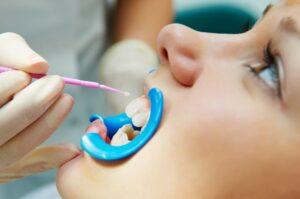When your teeth are in need of a deep clean, your dentist may advise a session of scaling and root planing. While it may sound technical and invasive, this is a non-surgical procedure that removes dental plaque from both above and below the gumline, and it is mainly used as a preventative treatment for gum disease.
Do You Need Scaling and Root Planing?
If your oral healthcare specialist has booked you in for a scaling and root planing appointment, it is likely that you are suffering from plaque build-up or gum disease. As gum disease is caused by plaque (a film of bacteria that consistently settles on the teeth), it’s not uncommon for gums to get infected and suffer with swelling and inflammation.
If these common effects are not dealt with, they can cause your gums to disengage from your teeth, creating empty pockets that can harbor plaque and tarter (hardened plaque) – creating a higher risk of gum disease occurring. In these instances, regular teeth brushing practices won’t be able to clear the plaque away to prevent the most extreme instances of tooth and bone loss.
Professional cleaning methods such as scaling and root planing have been developed to reach further than those pockets of plaque that find their way into your teeth and gums. In essence, if your tooth structure below the gumline isn’t damaged by gum disease, a professional clean will suffice, but if some damage has been done, it will be time for this treatment.
How is Scaling and Root Planing Accomplished?
As the name would suggest, the processes of this deep cleaning treatment are undertaken in two parts. The first part is the process of scaling, which is where your dentist will remove all of the plaque and tarter that has built up within your mouth – both above and below the gumline. The next part is the root planing process, where your dentist will smooth out the surface of the roots of your teeth, to help your gums to reattach themselves. The overall processes can take more than one visit and to accomplish, and in some cases may require the use of local anesthetic.
Aftercare Practices
It is important to follow the proper aftercare practices after receiving a procedure such as this, especially as you may experience some discomfort, sensitivity, or pain, and you may even suffer with swollen, tender gums that may bleed, too. To manage these effects and to prevent infection, you may be prescribed medication or a mouth rinse that will help to both numb and disinfect your mouth. Your oral healthcare provider may also insert specific medication directly into the cleaned out pockets, to ensure ongoing protection during the healing process.
Be sure to practice good dental care at home by brushing and flossing your teeth twice a day, and after a few weeks you will likely be scheduled in for another appointment – so that your dentist can examine just how successful the treatment was.








